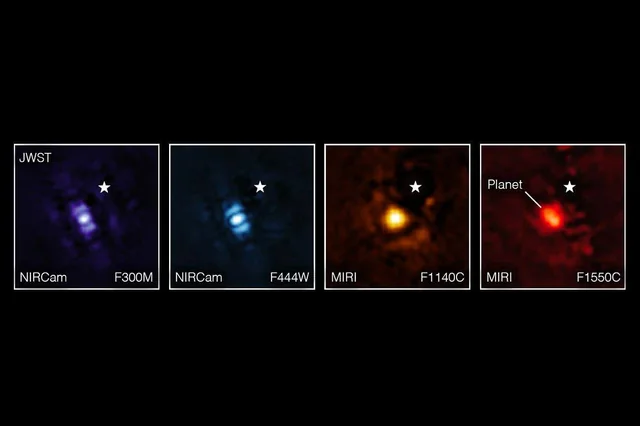Paris: The James Webb Space Telescope has made a groundbreaking achievement by capturing its first direct image of an exoplanet, marking a significant milestone in space exploration.
The telescope, operational since 2022, revealed the planet TWA 7b, located approximately 100 light-years from Earth. Unlike previous methods that inferred exoplanets through indirect signals, Webb’s advanced instruments, notably its MIRI coronagraph, successfully imaged the planet directly by blocking out the overwhelming glare of its host star.
Overcoming Challenges in Exoplanet Imaging
Direct imaging of exoplanets has long been a formidable challenge for astronomers due to their faint heat signatures and the brightness of their stars. Webb’s innovative use of a coronagraph—a device that mimics a solar eclipse—has enabled scientists to observe planets that were previously hidden in stellar glare.
A Cold, Saturn-Mass World
TWA 7b, identified within a gap in its star’s debris disc, is roughly the mass of Saturn and is notably smaller than most exoplanets previously imaged directly. This discovery not only demonstrates Webb’s enhanced imaging capabilities—improving sensitivity by a factor of ten—but also opens new avenues for detecting smaller, potentially rocky planets.
Looking Toward Earth-Like Worlds
While the current focus remains on gas giants, astronomers are optimistic about future discoveries of Earth-like planets that could harbor life. Upcoming telescopes, such as Chile’s Extremely Large Telescope set to launch in 2028, aim to push the boundaries even further in the search for habitable worlds.
A Leap Forward in Space Exploration
The direct imaging of TWA 7b represents a major leap in exoplanet research, providing a new tool to explore the universe’s myriad planetary systems and bringing humanity closer to answering whether life exists beyond our solar system.





















